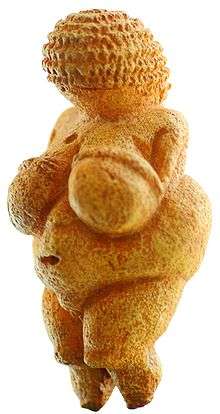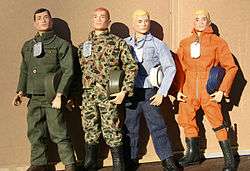Figurine

A figurine (a diminutive form of the word figure) or statuette is a small statue that represents a human, deity or animal, or in practice a pair or small group of them. Figurines have been made in many media, with pottery, metal, wood, glass, and today plastic or resin the most significant. Ceramic figurines not made of porcelain are called terracottas in historical contexts.
Figures with movable parts, allowing limbs to be posed, are more likely to be called dolls, mannequins, or action figures; or robots or automata, if they can move on their own. Figurines and miniatures are sometimes used in board games, such as chess, and tabletop role playing games.
Prehistory

In China, there are extant Neolithic figurines.[1] European prehistoric figurines of women, some appearing pregnant, are called Venus figurines, because of their presumed connection to fertility. The two oldest known examples are made of stone, were found in Africa and Asia, and are several hundred thousand years old. Many made of fired clay have been found in Europe that date to 25-30,000 BC, and are the oldest ceramics known.
Olmec figurines in semi-precious stones and pottery had a wide influence all over Mesoamerica about 1000-500 BC, and were apparently usually kept in houses.
These early figurines are among the first signs of human culture. One cannot know in some cases how they were used. They probably had religious or ceremonial significance and may have been used in many types of rituals. Many are found in burials. Some may have been worn as jewelry or intended to amuse children.
History
Porcelain and other ceramics are common materials for figurines. Ancient Greek terracotta figurines, made in moulds, were a large industry by the Hellenistic period, and ones in bronze also very common. In Roman art bronze came to predominate. Most of these were religious, and deposited in large numbers in temples as votives, or kept in the home and sometimes buried with their owner. But types such as Tanagra figurines included many purely decorative subjects, such as fashionable ladies. There are many early examples from China, which drove the experimentation in Europe to replicate the process. The first European porcelain figurines, produced in a process mastered in Germany were known as Meissen ware after the city where it began. Soon the technique was copied in other cities, such as the one depicted from Dresden.
Genre figurines of gallant scenes, beggars or figurines of saints are carved from pinewood in Val Gardena, South Tyrol (Italy), since the 17th century.
Modern era

Modern figurines, particularly those made of plastic, are often referred to as figures. They can encompass modern action figures and other model figures as well as Precious Moments and Hummel figurines, Bobbleheads, Sebastian Miniatures and other kinds of memorabilia. Two companies which produce porcelain figurines are Royal Doulton, Lladró and Camal Enterprises.[2]
Figurines of comic book or sci-fi/fantasy characters without movable parts have been referred to by the terms inaction figures (originally used to describe Kevin Smith's View Askew figurines) and staction figures (a portmanteau of statue and action figures coined by Four Horsemen artists to describe Masters of the Universe figures).
There is also a hobby known as mini war gaming in which players use figurines in table top based games. These figurines are mostly made of plastic and pewter. However, some premium models are made of resin.
Gallery
For more images related for "Figurine", see Category:Figurines on Commons
 Minoan pottery praying woman, 16th century BC
Minoan pottery praying woman, 16th century BC Figurine from the Mixtec culture
Figurine from the Mixtec culture The twelve Chinese zodiac figurines
The twelve Chinese zodiac figurines- Thai girl
 18th century Saint John Baptist pinewood polychrome figurine
18th century Saint John Baptist pinewood polychrome figurine Franz Anton Bustelli, German porcelain group
Franz Anton Bustelli, German porcelain group Porcelain painter, Royal Copenhagen
Porcelain painter, Royal Copenhagen
 Lladró figurine called En sus pensamiento
Lladró figurine called En sus pensamiento
See also
References
- ↑ Li Liu, The Chinese Neolithic: Trajectories to Early States, 2004, Cambridge University Press, 328 pages ISBN 0-521-81184-8
- ↑ "New range of 'gypsy wedding' figurines launched by Camal Enterprises". The Sentinel. Retrieved 1 June 2015.
| Wikimedia Commons has media related to Figurines. |